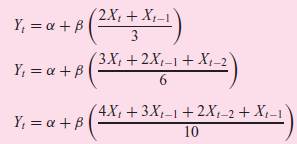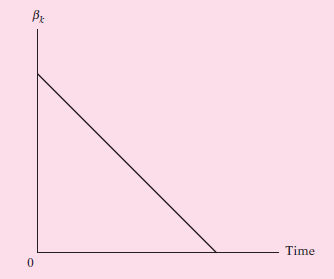Triangular, or arithmetic, distributed-lag model. This model assumes that the stimulus (explanatory variable) exerts its greatest impact
Question:

etc., and choose the regression that gives the highest R2 as the €œbest€™€™ regression. Comment on this strategy.

Fantastic news! We've Found the answer you've been seeking!
Step by Step Answer:
Related Book For 

Question Posted:





